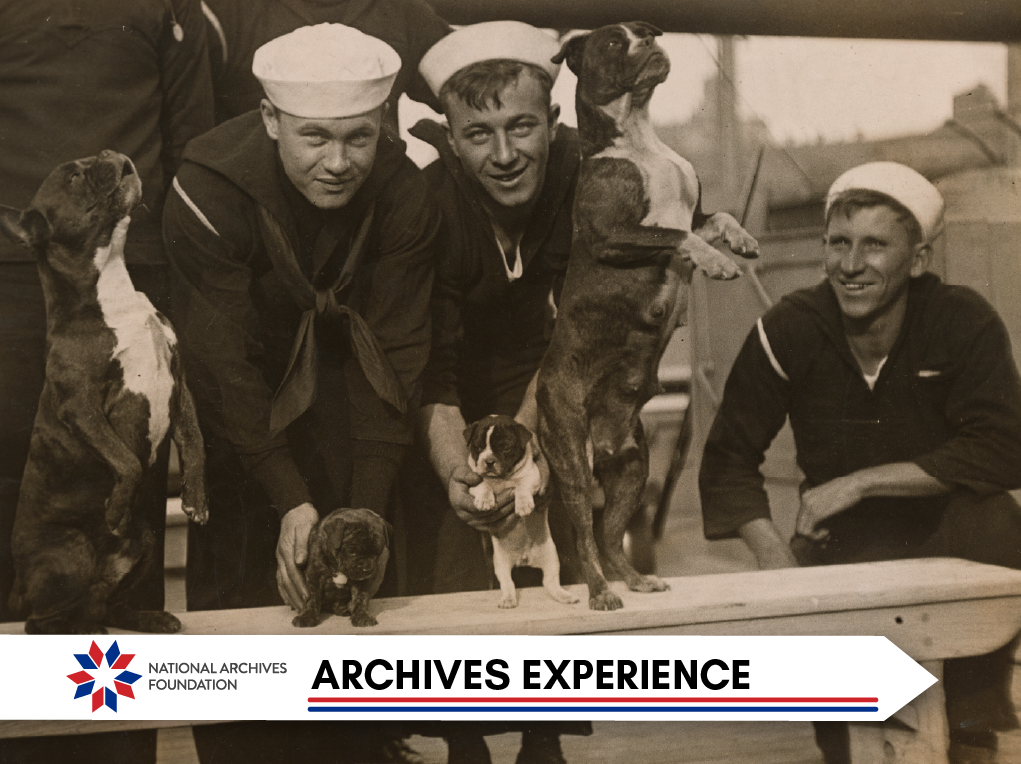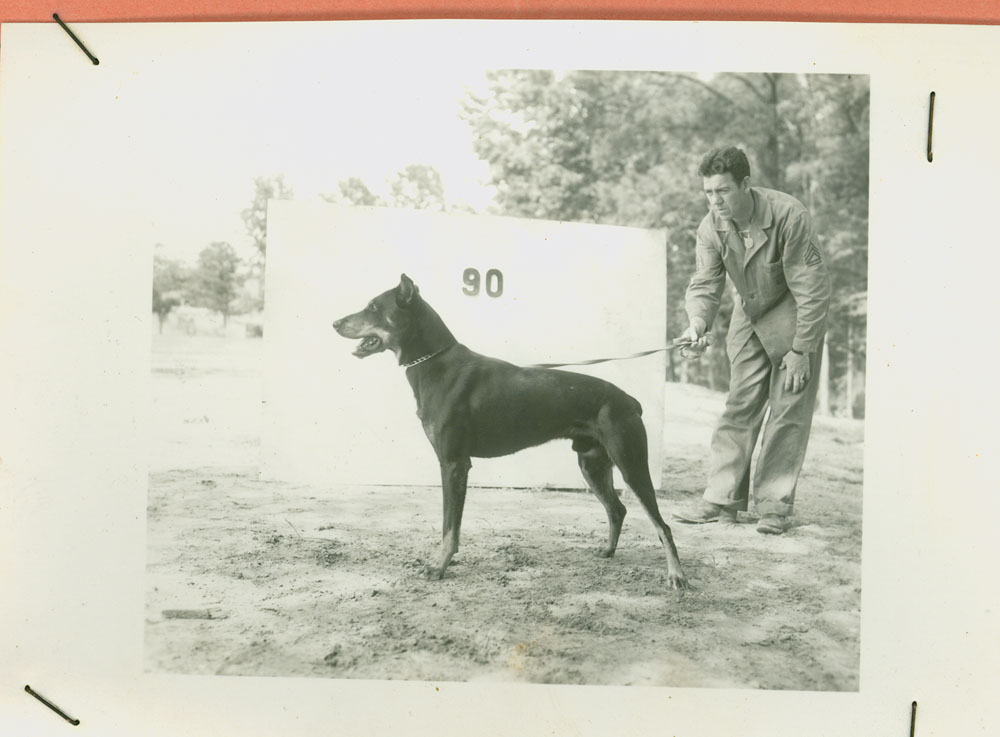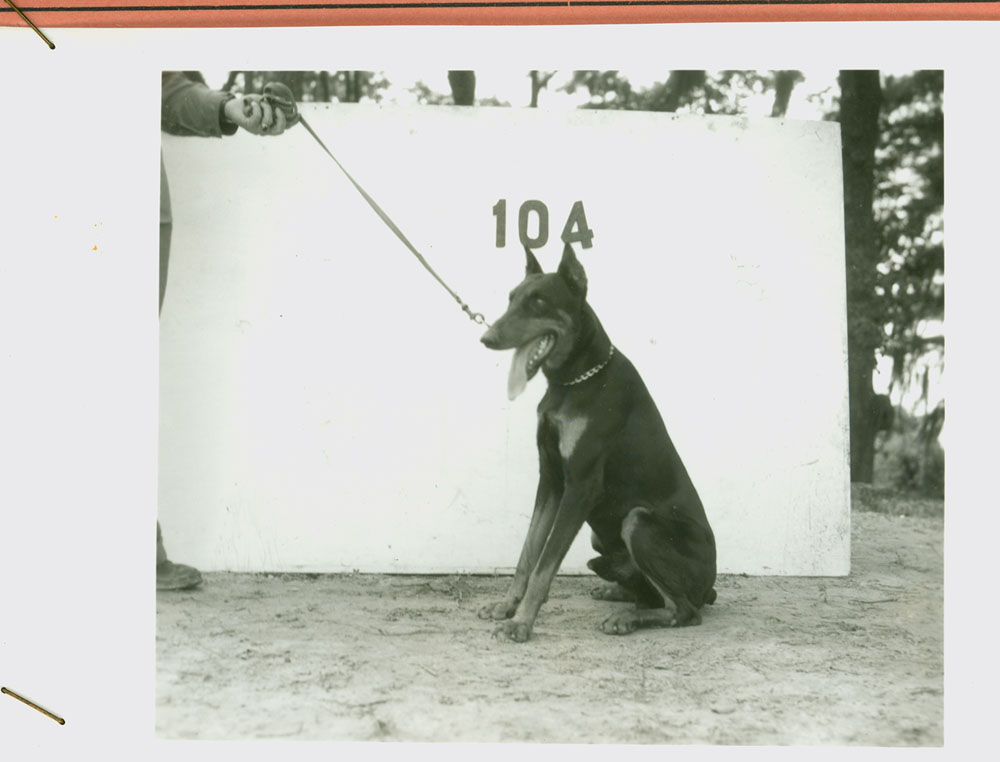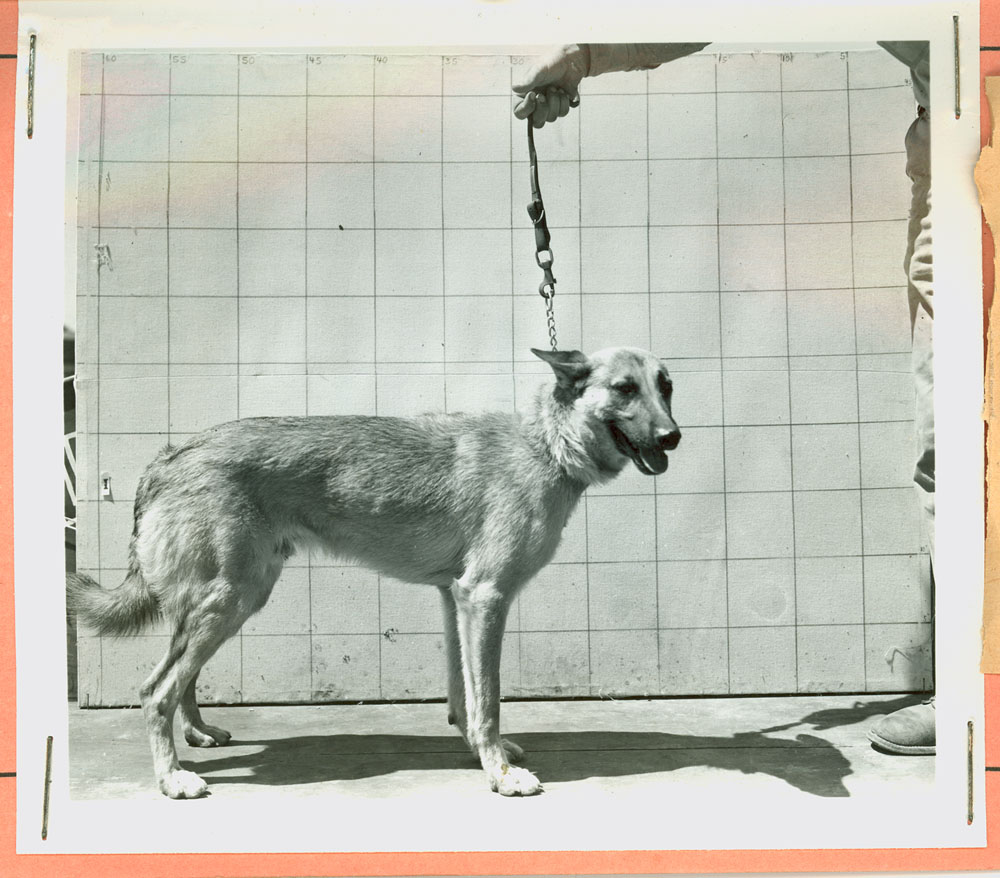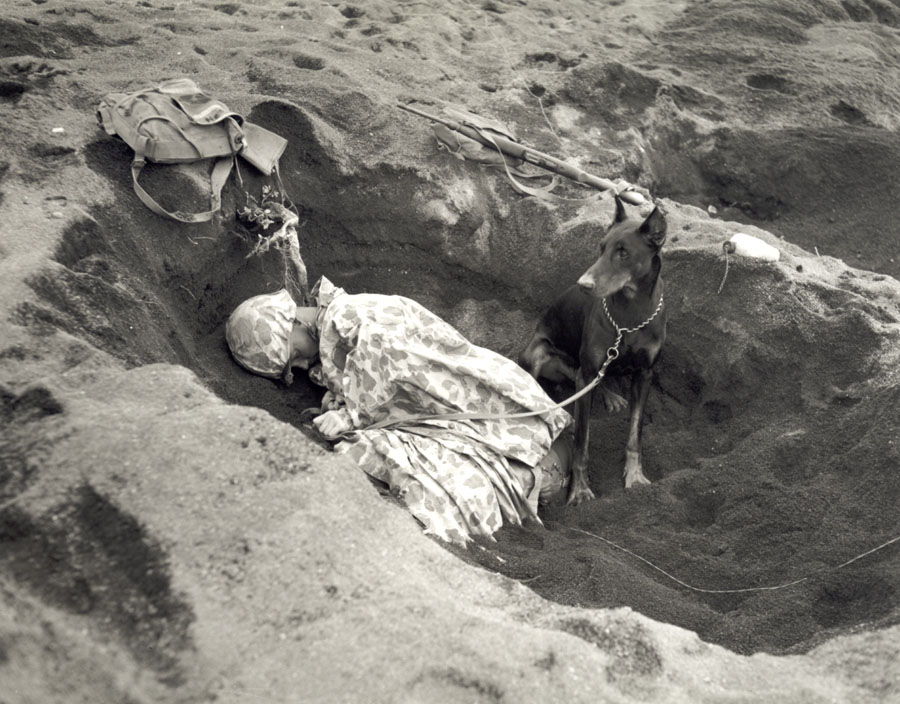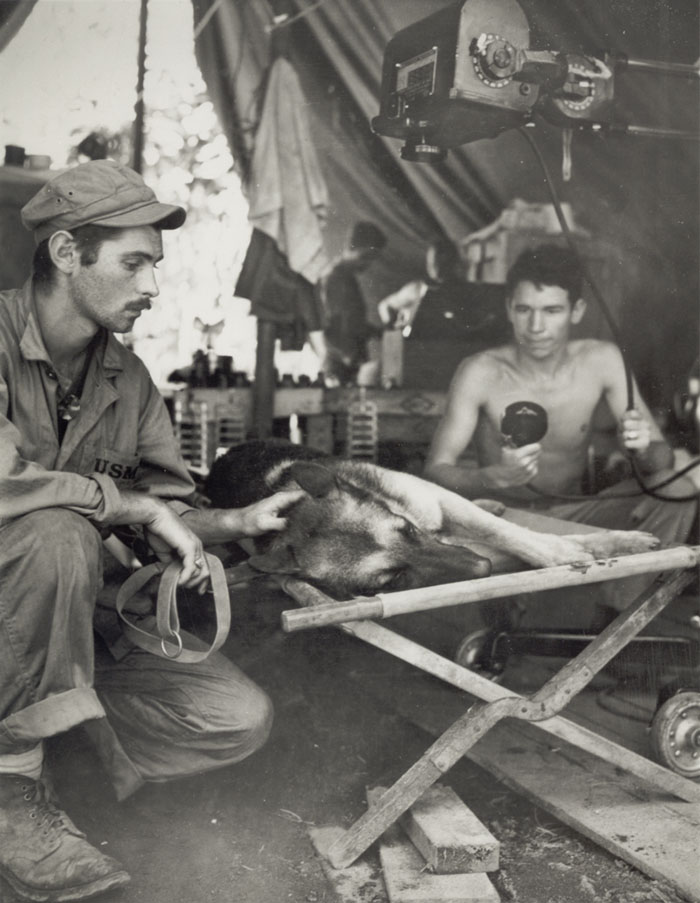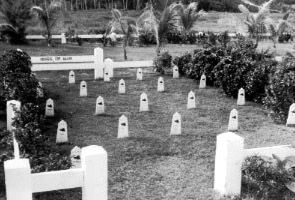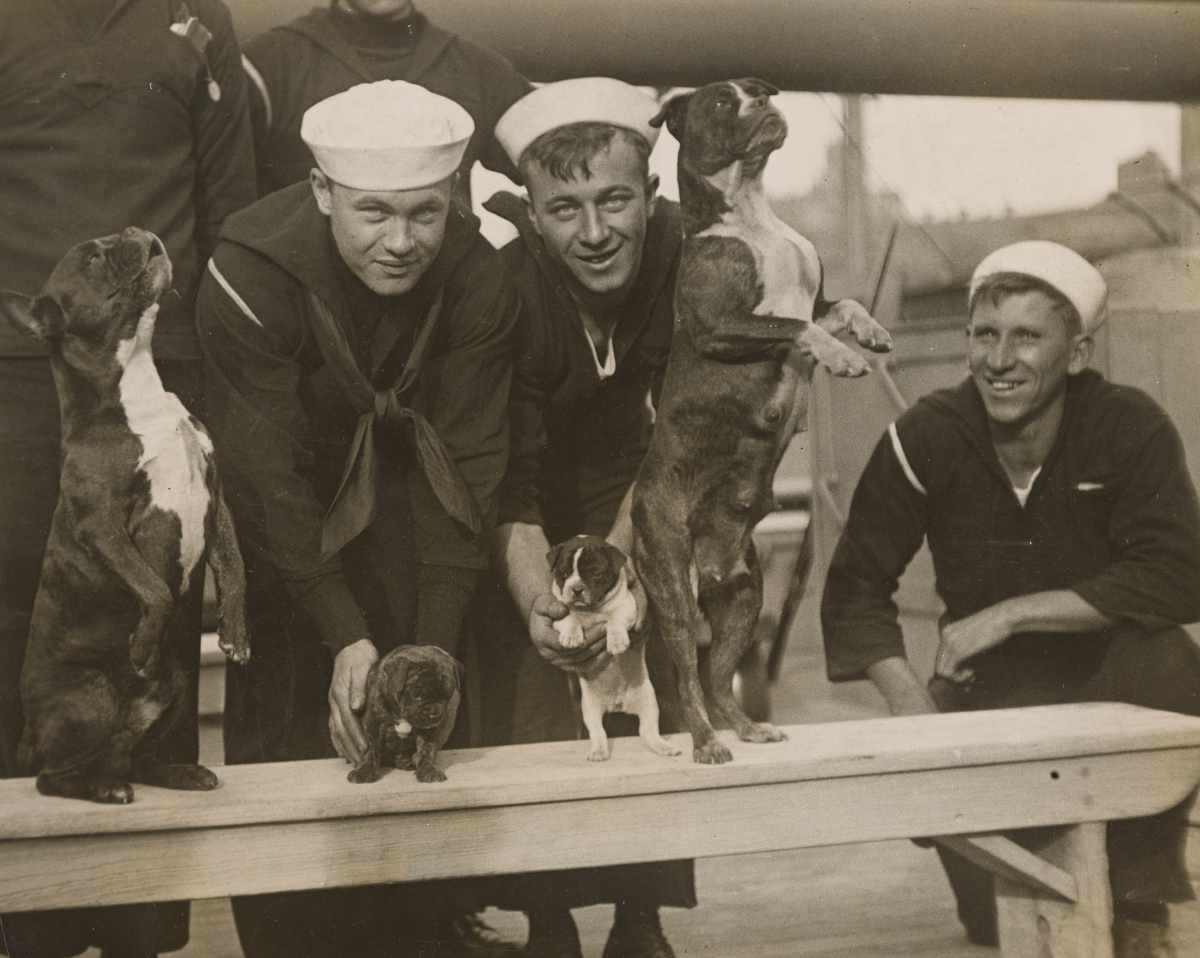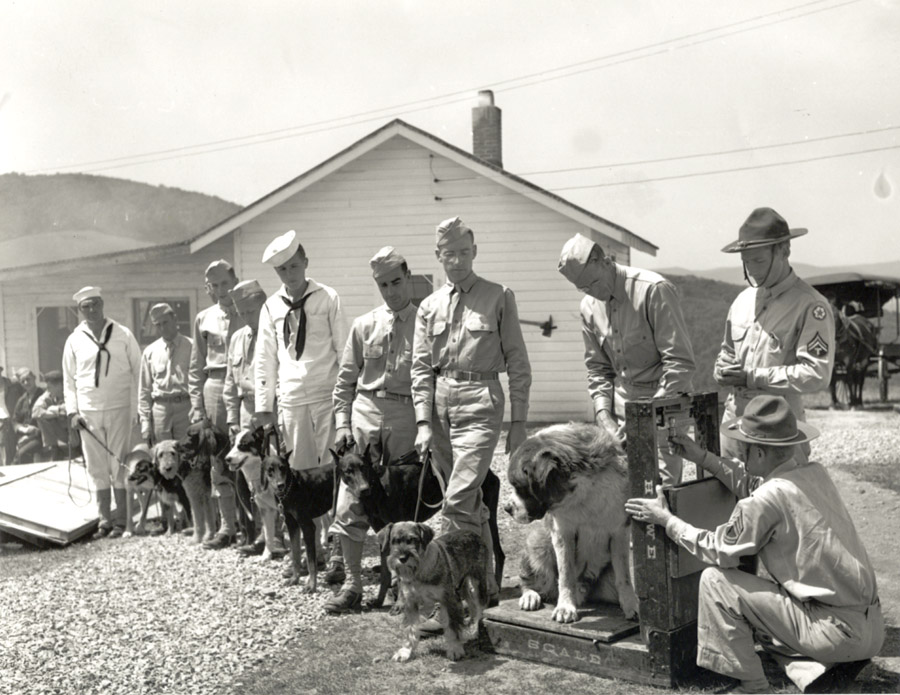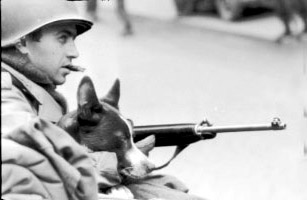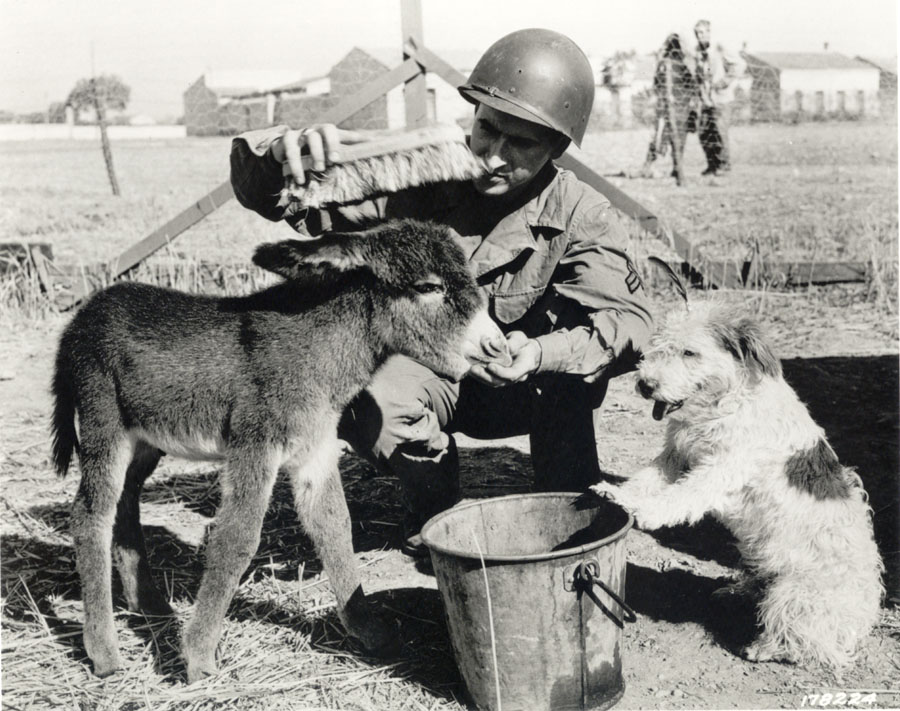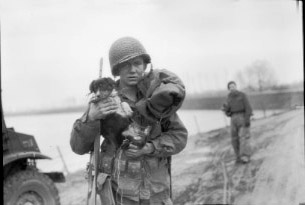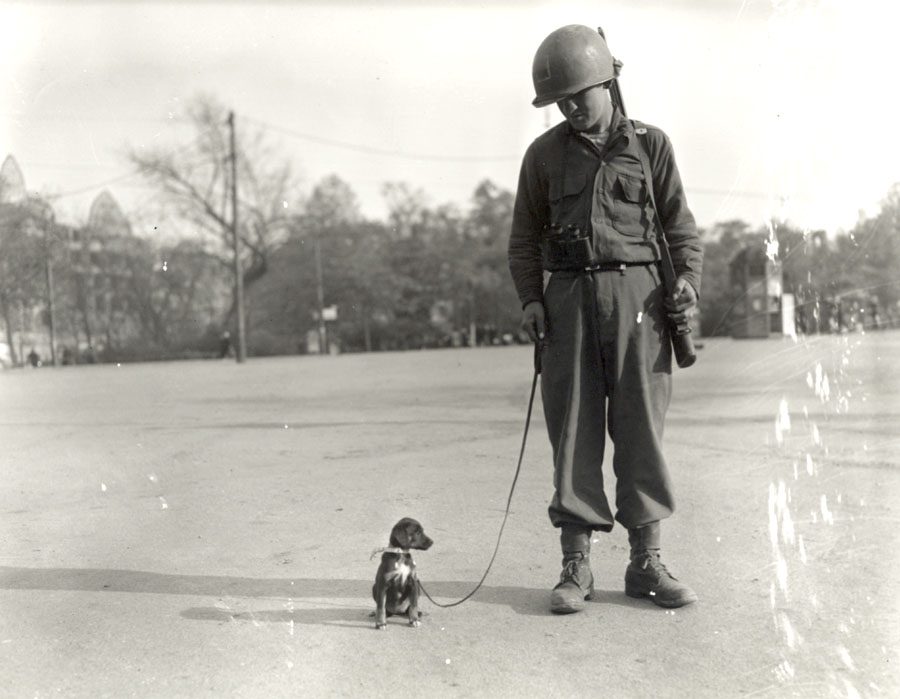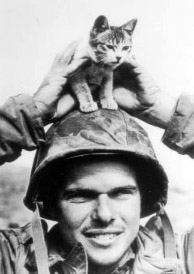Archives Experience Newsletter - August 1, 2023
Dogust First
Very few pet parents who adopt their furry friends from animal shelters know their exact birthdays. So instead, many celebrate “Gotcha Day,” which assigns their pet’s birthday to the same day that they were adopted into their fur-ever home.
But why celebrate just once a year? In addition to “Gotcha Day,” you can also celebrate your rescue dog’s (or other furry companions) birthday on “Dogust First,” AKA August 1st, the universal birthday of shelter dogs.
We’re celebrating Dogust First with a salute to the dogs in the holdings of the National Archives. Most of them were in the military and served their country with the kind of loyalty that only a dog can demonstrate. Okay, enough reading—it’s time to look at dog pictures…more
In this issue
History Snack
Time to Pawty!
It’s fitting that Dogust, the national celebration of all shelter dogs whose birthdays aren’t known, is observed on August 1, right in the midst of the “dog days of summer.” The phrase originated with the Greeks and Romans, who tracked the seasons by watching the stars. When Sirius, the brightest star in the night sky, appeared just before the sun rose at the end of July, the ancients knew that the hottest days of the year, from roughly July 3 through August 11, were upon them.
Sirius is called the “dog star” because it forms the nose of the constellation Canis Major, to the right and below the constellation Orion, named for the mighty hunter of Greek mythology. Sirius was Orion’s dog and his faithful companion, and the Greeks immortalized him with his own constellation at the feet of his master. When we see Sirius in the night sky, we know it’s going to get hot outside.
Anyone who has ever lived with a dog, shelter or otherwise, knows that one of a dog’s greatest attributes is its unwavering loyalty. That characteristic has made dogs a huge asset in the U.S. military, in which they have long played active roles, both formal and informal. The National Archives is the repository of records of the presence and service of dogs in the military for decades past.
Loyal Companions
During World War II, some people volunteered their dogs for service in the military. The War Dog Service Books, ca. December 1942–June 1946, consist of two subseries. The first documents dogs that were trained to serve the U.S. Marine Corps, and the second describes dogs trained by the Marines that went on to serve in the U.S. Army. The detailed records include the animal’s name, serial number, date of enlistment, training, the units it served with, the names and ranks of its human handlers, its medical history, any promotions, commendations, or citations it achieved, and why, when, and where it left military service, and an evaluation of its character.
Source: NARA’s Prologue Magazine
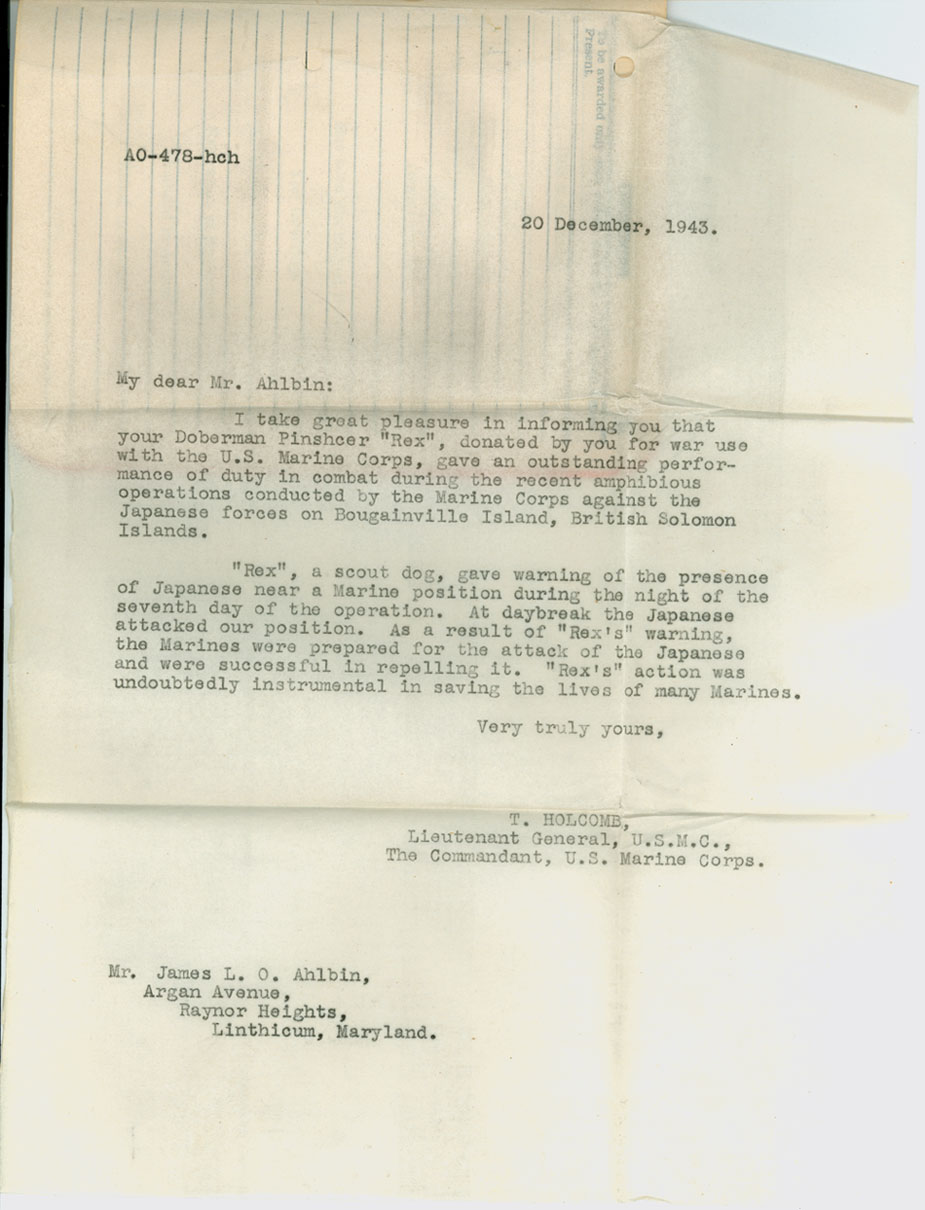
Rex’s owner receives a commendation for his dog’s service
Source: NARA’s Prologue Magazine
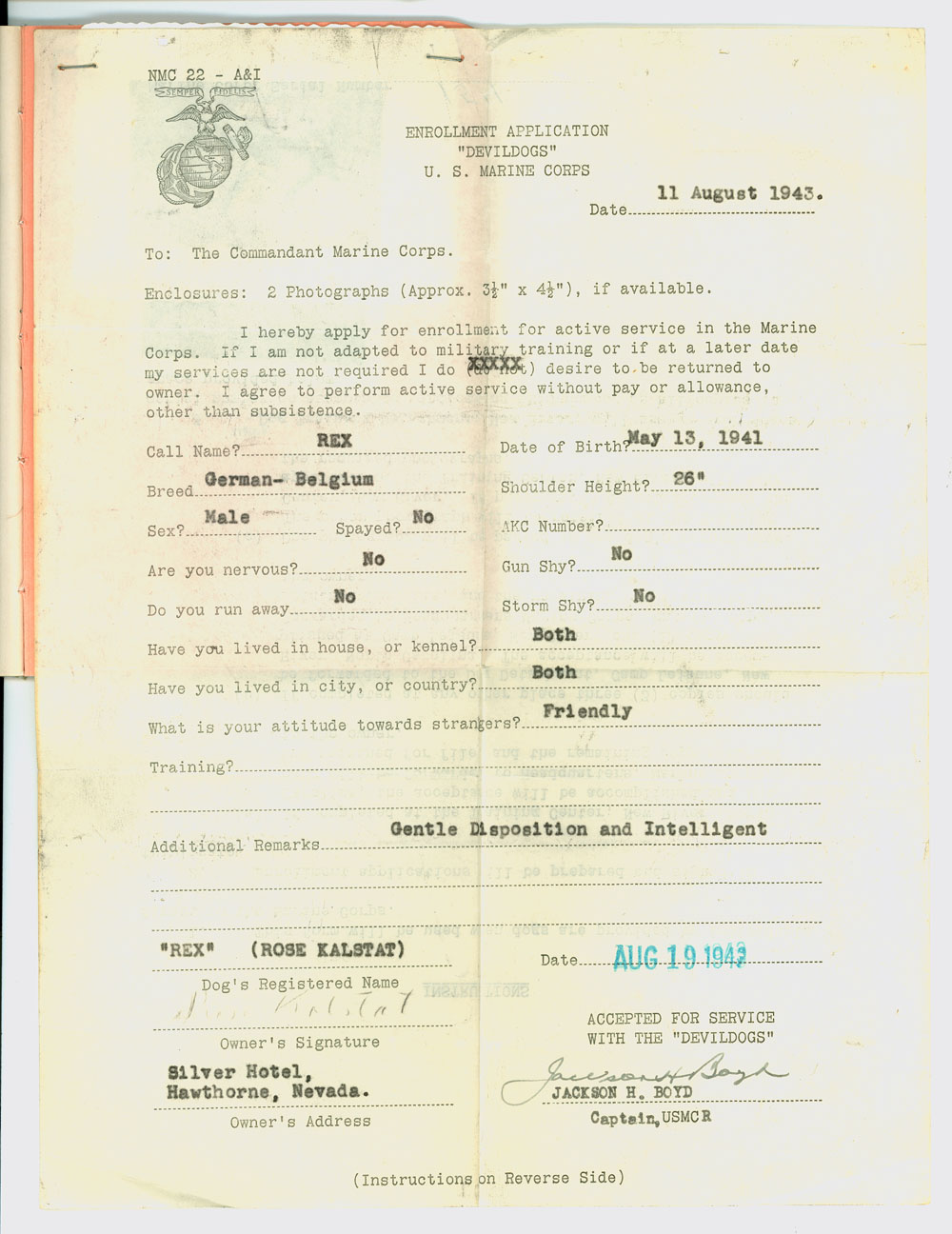
Enrollment forms were filled out from the dog’s perspective
Source: NARA’s Prologue Magazine
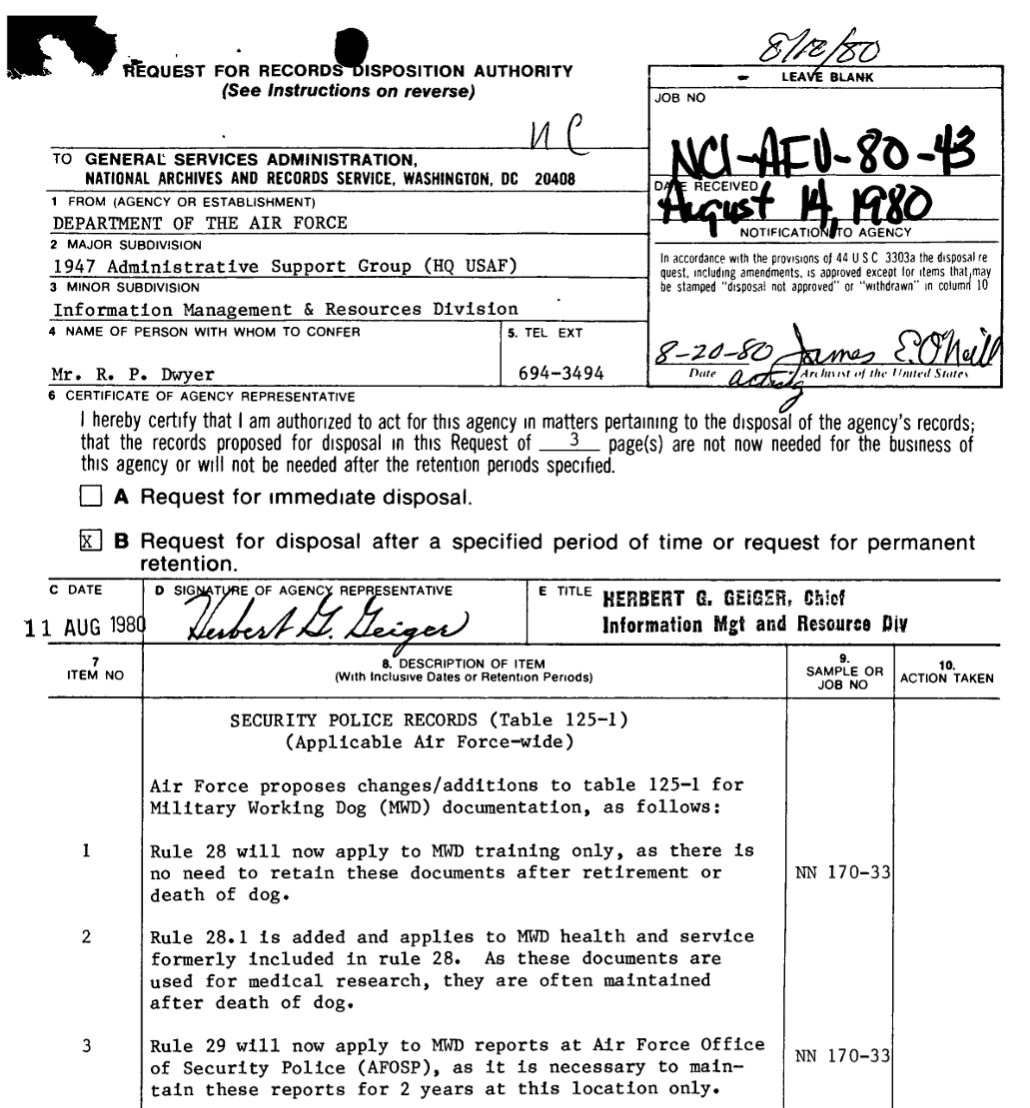
Dog training records and medical fitness
/figcaption>
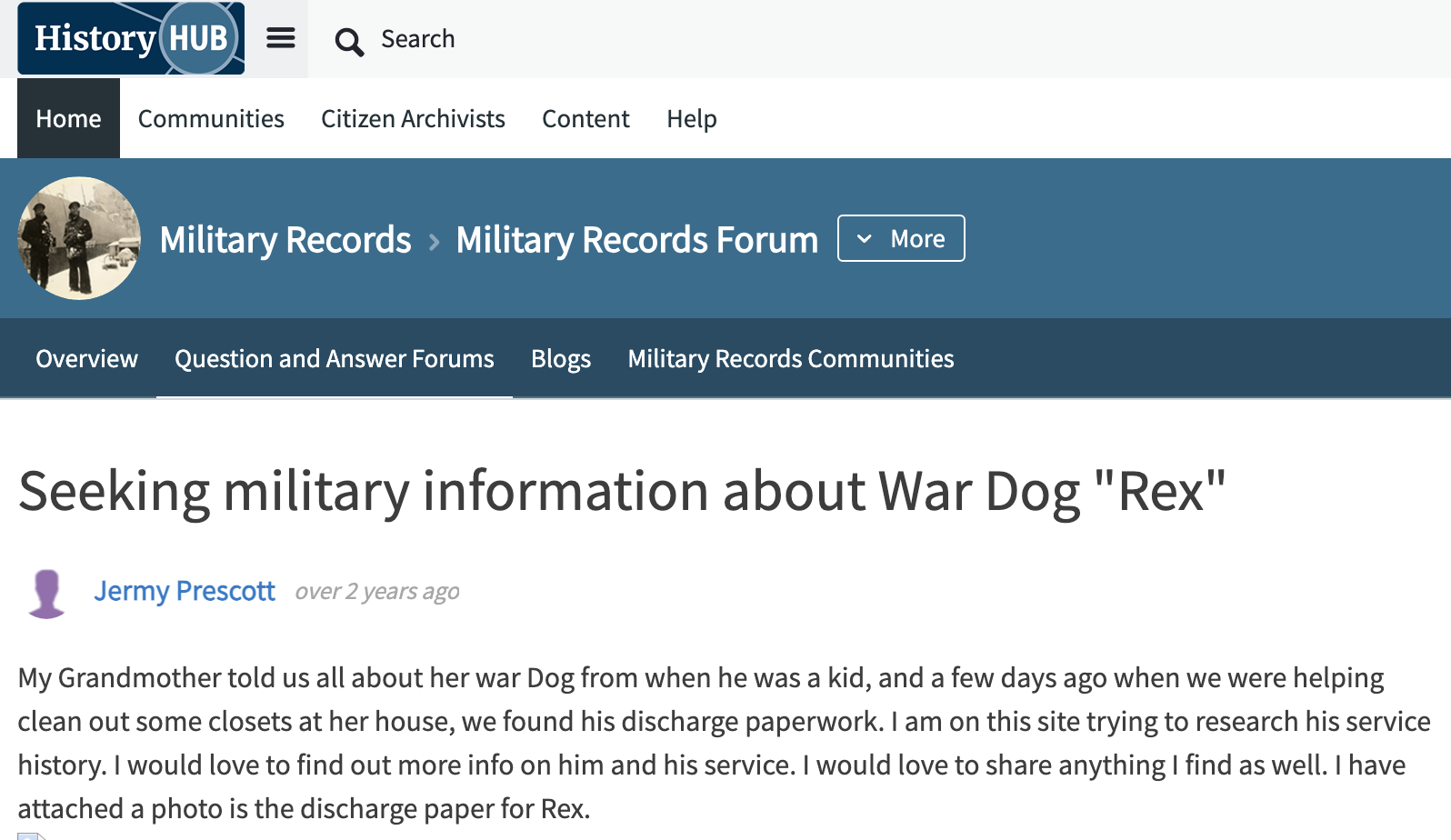
Check out this post on History Hub about Rex the War Dog
Source: NARA’s History Hub > Military Records > Military Records Forum
The Coast Guard had several dogs as mascots, including Pete the Pooch, a wire-haired fox terrier, who helped handle the ropes for boats that were coming ashore; Doc Sunshine, who sailed on a transport ship that ferried reinforcement troops overseas and carried wounded soldiers back; and Spar, a Boston bull terrier who served aboard a Coast Guard combat cutter from her puppyhood. Probably the most famous Coast Guard mascot was Sinbad, who was undoubtedly brave—he was aboard the Coast Guard Cutter Campbell when the ship encountered a group of U boats. While the cutter’s crew depth-charged six of the submarines and sank the last one by ramming it, Sinbad slept through the excitement, undoubtedly certain that his comrades would take care of business. Sinbad’s duties mainly consisted of keeping his shipmates’ morale up with his hijinks.
But it was in his off-duty hours that Sinbad made up for lost time, going AWOL in Sicily and quite literally missing the boat when the Campbell left without him. When another crew captured him and sent him back to his ship, he was confined to quarters for the rest of his service. Sinbad served the Coast Guard for more than five years and won several commendations for bravery.
Sinbad the Sailor Dog
(1 minutes 28 seconds)
Source: NARA’s The Unwritten Record blog
In theater, many soldiers, sailors, marines, and Coast Guard personnel had both mascots and pets that they adopted along the way. In 1917, Buster and Queenie served as mascots of the U.S.S. Texas, a Navy vessel. The Army 26th Division took on a mascot named Little Joe. In North Africa, the soldiers adopted both GI Jenny, a donkey, and Pito, a terrier. Dog Dud became attached to the 101st Airborne, and in April 1945, the company had a puppy named Leipzig.
Source: NARA’s Prologue Magazine





